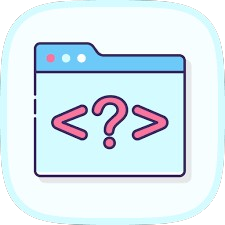Picture this: You’re racing against the clock to finish a coding project. The coffee is cold, the deadline is near, and suddenly, your code throws an error. The culprit? A tiny syntax mistake—a forgotten semicolon, a misplaced bracket, or a rogue quotation mark. Sound familiar? If you’ve ever wrestled with such mishaps, you’re not alone. The good news? Regular testing can save you from these headaches.
Why Syntax Errors Are More Than Just Typos
Syntax errors are like the potholes of programming. While they might seem minor, they can grind your entire workflow to a halt. But unlike typos in a text message, syntax errors aren’t just annoying; they’re non-negotiable. Your code won’t run until you fix them.
Common Causes of Syntax Errors
- Human Oversight: We all make mistakes, especially under pressure.
- Complex Code: The more lines of code, the higher the chances of a slip-up.
- Inconsistent Coding Standards: Switching between styles or languages can trip you up.
- Tool Limitations: Even the best IDEs can miss subtle issues.
The Role of Regular Testing
Enter regular testing: the unsung hero of clean, functional code. It’s not just about finding errors—it’s about catching them early, often, and efficiently. Here’s how it works.
Catching Errors Early
Regular testing acts as a safety net, catching syntax errors before they snowball into larger issues. By testing your code incrementally, you’ll identify problems as they arise, not hours later when you’re knee-deep in a debugging marathon.
Types of Tests to Consider
- Unit Tests: Focus on individual components of your code. Think of it as zooming in on one puzzle piece at a time.
- Integration Tests: Ensure that different modules play well together.
- Automated Testing: Tools like Jest, Mocha, or Pytest can run predefined tests in seconds, saving you hours.
Tools for Syntax Checking
Modern development tools make syntax testing almost effortless. Here are a few must-haves:
- Linters: Tools like ESLint or Pylint can catch syntax errors as you type.
- Code Editors with Syntax Highlighting: IDEs like Visual Studio Code or JetBrains’ suite highlight potential issues instantly.
- Version Control with CI/CD Pipelines: Automated testing during commits ensures every update is error-free.
How to Build a Habit of Regular Testing
Great, you’re sold on testing. But how do you make it a regular part of your workflow? Here’s the game plan:
Step 1: Set Up Automated Tests
Invest time upfront to write automated tests for your codebase. These will run in the background and alert you to syntax errors without manual effort.
Step 2: Test Incrementally
Write a little, test a little. Resist the urge to write hundreds of lines before hitting “Run.” Testing incrementally ensures you’re always working with functional code.
Step 3: Leverage Peer Reviews
Two heads are better than one. Regular code reviews by your peers can catch syntax errors you might overlook.
Step 4: Document and Refactor
Keep a record of common errors and learn from them. Regularly refactor your code to adhere to consistent standards, minimizing the chance of mistakes.
The Story of a Syntax-Free Workflow
Let’s paint a picture of the benefits. Imagine a developer, Alex. Alex once spent hours debugging a project, only to find a missing comma was the issue. Frustrated, Alex decided to implement regular testing.
With automated tools and a disciplined approach, Alex’s workflow transformed. Syntax errors became rare interruptions rather than daily battles. Projects finished on time, and confidence in the code soared. Alex’s secret? Testing early, testing often, and trusting the process.
Final Thoughts
Syntax errors are inevitable, but their impact doesn’t have to be. Regular testing is your armor against these pesky problems, keeping your code functional and your sanity intact. So, embrace testing—your future self (and your deadlines) will thank you.
Ready to revolutionize your workflow? Start by integrating testing tools into your projects today. It’s a small step with huge rewards.

